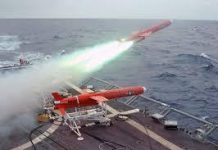
Denmark has decided to procure the French-Italian SAMP/T air defense system to serve as the long-range element of its expanding integrated ground-based air defense network. This marks Denmark’s selection of the only European-made alternative to the U.S.-produced Patriot system.
According to the Danish government, the investment will amount to roughly 58 billion kroner (about $9.1 billion) to acquire and operate eight medium- and long-range systems—more than twice the previously estimated 19–25 billion kroner. Two of these will be SAMP/T units, Danish broadcaster TV reported.
This purchase makes Denmark the first European Union country to order SAMP/T for export, with France and Italy being the only EU operators so far. By contrast, around seven EU nations currently deploy the Patriot. Ukraine has also received at least two SAMP/T systems, one of which is active in defending Kyiv.
General Michael Hyldgaard, Denmark’s Chief of Defence, emphasized the lessons of the Ukraine war: “It underlines the importance of a modern, layered air defense architecture with multiple integrated systems.”
In recent years, Denmark has pieced together a medium-range air defense capability using three systems: Kongsberg’s NASAMS, two MBDA VL MICA batteries, and a German IRIS-T unit from Diehl Defence. The first of these is expected to be operational by late 2025. These medium-range systems will also be counted among the final eight acquisitions, with future components to be chosen between additional systems from Kongsberg, MBDA, and Diehl.
Lieutenant General Per Pugholm Olsen, who leads the Defence Acquisition and Logistics Organization, noted that sourcing from several suppliers shortens delivery times, helping Denmark accelerate the buildup of its full ground-based air defense capacity.
Each of the eight batteries will typically include radar, a fire-control unit, and one or more launchers carrying multiple missiles. Procurement decisions were based on operational needs, cost efficiency, and broader strategic factors.
The European Commission has urged EU members to prioritize European defense manufacturers in order to bolster the continent’s defense industry and deterrence posture. Concerns have grown about Europe’s reliance on U.S. systems, particularly after former President Donald Trump questioned NATO commitments.
Defence Minister Troels Lund Poulsen called the investment Denmark’s largest in ground-based air defense to date, writing on social media: “This bold step strengthens our armed forces and improves the security of the Danish people.”
The U.S. recently offered Denmark two Patriot systems with integrated battle command capability for about $8.5 billion, surprising many European procurement officials.
As part of the deal for European systems, Denmark has also required industrial offsets worth over 10 billion kroner. These offsets may include direct purchases from Danish defense companies or collaborations with foreign suppliers to co-develop technologies.
SAMP/T is produced by Eurosam, a joint venture between Thales and MBDA’s French and Italian branches. France has signaled interest in aligning the system with the German-led European Sky Shield Initiative, though Paris and Rome previously opposed Berlin’s choice of the Patriot for long-range coverage. France has already contracted for serial production of the upgraded SAMP/T NG variant.
The SAMP/T battery can integrate up to six vertical launchers, each carrying eight Aster 30 B1 or B1NT missiles, and may be paired with short-range defenses such as VL MICA or CAMM-ER for close-in protection. The radar, provided by either Thales or Leonardo, is an active electronically scanned array with 360-degree coverage, capable of detecting aircraft, missiles, and ballistic threats.
According to MBDA, a launcher can fire all eight missiles in roughly 10 seconds. The system’s range extends to 150 kilometers against aircraft, with strong performance against theater ballistic missiles.
The Aster 30 missile itself is 4.9 meters long, weighs 450 kilograms, and uses a two-stage solid-fuel rocket motor to reach speeds up to Mach 4.5. It employs inertial guidance with midcourse updates and an active seeker in the terminal phase, supported by thrust-vector control for agility. Its blast-fragmentation warhead is effective against both aircraft and hardened ballistic targets.
Two configurations are available: the French version, which pairs the Thales GF 300 radar with MICA VL missiles, and the Italian version, which combines Leonardo’s Kronos GMHP radar with CAMM-ER missiles. Both rely on the Aster 30 for long-range interception.




